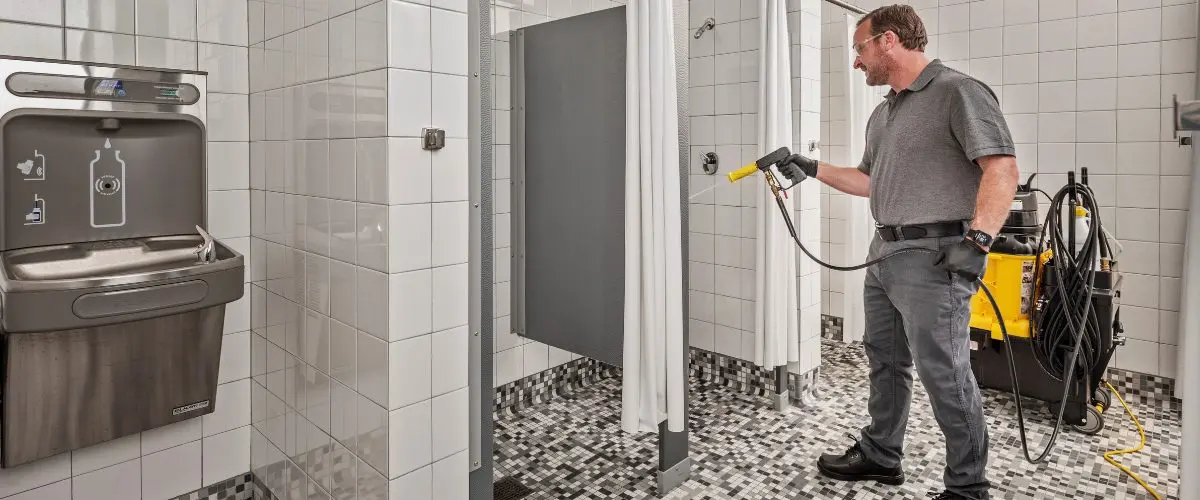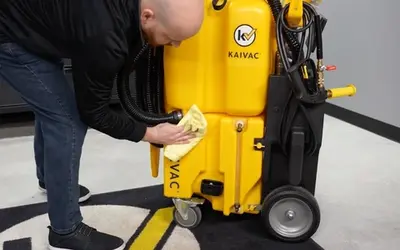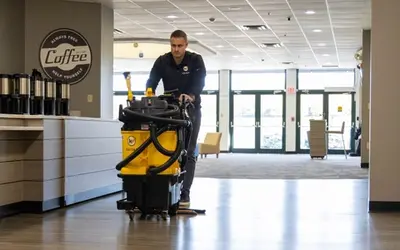Locker Room Cleaning for Health and Safety

Proper locker room cleaning is vital for health and safety. Warm, humid, and busy spaces, locker rooms are the perfect petri dish for a variety of dangerous pathogens to thrive. Without proper cleaning strategies in place, these pathogens will grow and spread, putting athletes and everyone else at risk.
Here’s the best procedures and tools for effective locker room cleaning for health and safety.
The Risks of Bad Locker Room Cleaning
Locker rooms are necessary for any athletic program. People need a place to change, stow their clothes, and (hopefully) shower. But that warm, constantly damp environment is very hospitable to all kinds of nasty bugs.
One of the most dangerous pathogens found in locker rooms is MRSA. This potentially deadly staph infection is hard to cure because of its resistance to some antibiotics. But it is not the only locker room threat. Other unpleasant microbes include:
- Ringworm, also known as tinea
- Influenza
- HPV
- Norovirus
- E. Coli
- Streptococcus
- Candida
- Klesbsiella
Some locker room dangers have nothing to do with microbes. Consistently wet floors also present slip and fall risks. To combat this threat textured tiles and grout are often used for locker room floors.
This combination provides traction, making the floor safer to walk on. But grout is porous, creating great hiding places for pathogens to grow and thrive. Removing soil from grout can be very challenging.
Procedures for Effective Locker Room Cleaning
Locker room cleaning should take place every day the facility is used. This article from Facility Executive by Gordon Buntrock provides some great tips on how to be proactive about the job. For instance, he advises starting in the cleanest place and moving to the dirtiest to help avoid cross contamination.
Buntrock also says that “Quality locker room cleaning for schools should use EPA-registered, hospital-grade disinfectants to clean all touch points and floors.” He suggests finding EPA-registered disinfectants that leave less residue but still provide superior cleaning required for grouted surfaces.
Speaking of grouted surfaces, that infamous mashup of unpleasant locker room smells come from protein-based soils often start in the grout and around floor drains and other surfaces. For the floor drains Buntrock suggests applying enzyme-based chemicals now and then to break down those proteins and get ahead of the stink. Fully removing soils from the grout will also help stop odors before they build up.
Tools for Better Locker Room Cleaning
Scheduling maintenance for high-traffic locker rooms can be tricky. Always doing the job overnight means the space is clean and safe at the start of the day. But what about the people who show up later? And what about all the soils users are tracking through the rest of the facility?
This makes day cleaning of locker rooms important for safety. Analyzing usage trends to identify peak times can be helpful in scheduling that day cleaning. Using state-of-the-art tools can help as well. Rink Magazine, a trade publication for the Ice Rink Association, says that No-Touch Cleaning® systems from Kaivac are the preferred tools for locker room cleaning.
This tool, paired with the appropriate cleaning chemical, blasts dirt, soils, and dangerous microbes from locker room surfaces to the floor. The machine’s powerful vacuum sucks up the slurry, completely removing the mess. The room is clean, dry, and safe. Even more impressive, cleaning staff never have to put themselves at risk by touching a dirty surface.
Ready to explore more tools for better locker room cleaning? Click here.
Related Posts

Preventive Maintenance for Your No-Touch Cleaning® System
Your Kaivac No-Touch Cleaning system makes restroom maintenance fast and easy. Keeping your No-Touch Cleaning system in good working order is also fast and easy. Kaivac makes performing preventative maintenance and troubleshooting potential issues simple. No special equipment or technical expertise required.
Read more
A System for Every Aisle: How Kaivac Delivers Complete Grocery Store Cleaning Solutions
Kaivac’s integrated Grocery Suite streamlines cleaning across every store zone, cutting labor, reducing cross-contamination, and delivering faster, deeper hygiene results for safer, fresher stores.
Read more
How to Clean Worship Facility Floors
Worship facilities need clean, safe floors to best serve their congregations. Here’s how tools from Kaivac keep worship facilities clean from the entry to seating areas to kitchens and more.
Read more